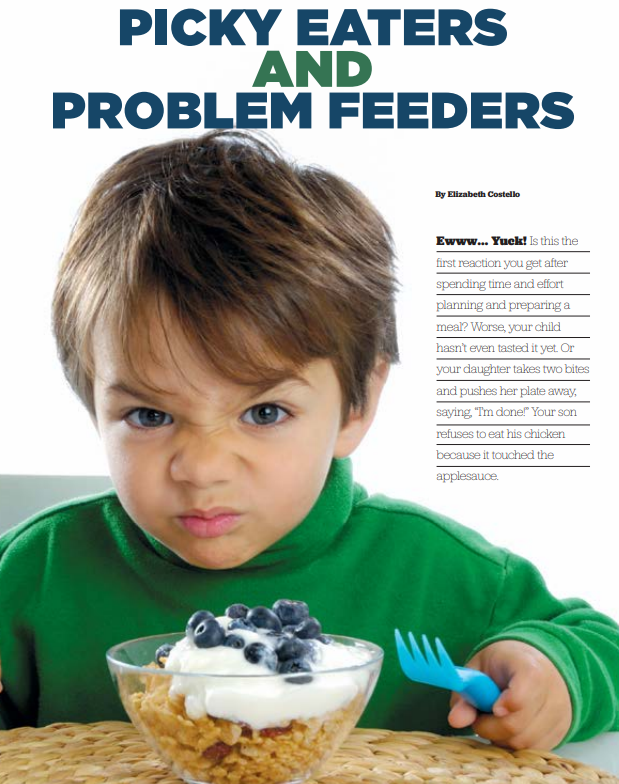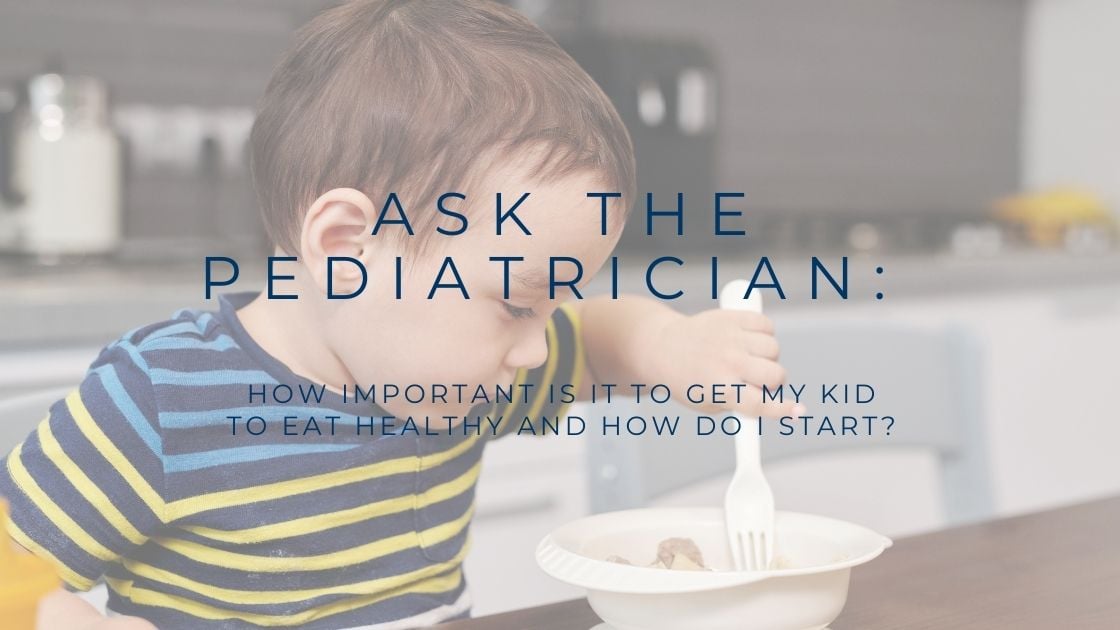Ewww… Yuck!
Is this the first reaction you get after spending time and effort planning and preparing a meal? Worse, your child hasn’t even tasted it yet. Or your daughter takes two bites and pushes her plate away, saying, “I’m done!” Your son refuses to eat his chicken because it touched the applesauce.
At one time or another, most parents face these frustrating scenes. Caregivers of toddlers report picky eating frequently; in fact, one study has indicated that up to 50 percent of parents identified their child as a picky eater during the first two years of life. But at what point does pickiness turn into a problem?
One Twin Cities metro area parent realized it wasn’t typical when every family meal with her now four-year-old daughter Julia was upsetting and beyond difficult.
“Julia used to be terrified. She couldn’t see or smell the food. She would yell ‘I don’t like that!’ and push her plate on the floor…we would all meltdown,” Sondra T. recounts.
The difference: picky v. problem
Picky eating is a normal stage of learning to eat and is a common concern for many parents, according to Robin Campbell, an occupational therapist specializing in feeding therapy at St. David’s Center for Child & Family Development in Minnetonka. It is especially common during the toddler years, when growth slows down. During this time, kids are on the go, they like things that are familiar and they do—and eat—what they like.
“Picky eaters are selective about what they eat, but they can still tolerate new foods on their plates, even though they may not eat them,” explains Campbell. “They will eat about 30 different foods, will eat foods across all food groups and of all textures and can eat successfully in places outside of their home.”
In contrast, a “problem feeder” is very rigid about mealtime, eats less than 20 foods, refuses to eat foods within a particular food or texture group, and has a strong adverse reaction to particular foods—leading to tantrums, crying, gagging, and possibly even vomiting when the food is presented. These children often have underlying factors for their responses to food. There may be a history of prematurity, respiratory or heart problems, swallowing problems, digestive issues, sensory processing differences, or developmental delays.
First: breathe
It is a common misperception that the most important thing for your child’s well being is food. “Breathing is the body’s number one priority. Number two is feeling secure and safe with our bodies,” Campbell says. “If a child is stressed and focused on supporting himself in his chair because his feet are dangling in the air, he is not able to concentrate on eating. Eating is our third priority.”
For Sondra, having a child that didn’t eat was incredibly stressful. “We were worried about her nutrition and her brain development,” she says.
Not surprisingly, that’s the point when most parents change their own behaviors and do whatever it takes to get their child to eat. At that point, negative eating patterns are created that are difficult to change.
Learning how to eat
Another common misperception is that eating is instinctual, when, in fact, it is learned. Feeding and eating are social events. It’s a relationship of giving and responding to cues when a parent feeds a child.
Here are 6 helpful tips on how you can teach your children how to eat and create successful eating habits.
- Establish mealtimes. Because children have small stomachs, offer five to six small meals every 2.5 to three hours, providing healthful food choices at each meal. A good guideline is one tablespoon of each type of food per each year of your child’s age. So, four-year-old Julia would receive four tablespoons of mashed potatoes.
- Create routines. Have your child sit in a just-her-size chair with foot supports where she is not distracted and can focus on eating. Turn the television off, put the phone down, and make meal times a family time.
- Be a role model. A lot of what children learn about food, they learn from their parents. Children usually develop preferences based on foods they have been exposed to in vitro, through breast milk, and as presented on their plates. Be aware of your own food preferences and the messages you are sending.
- Nix the clean plate club. Trust that your child will learn to eat an amount and variety of foods for his own nutrition and energy level. If your child is not hungry at one meal, she can eat at the next one. Do not become a short order cook and do not allow grazing between meals. Have water available between meals.
- Involve your child in the process. Look at recipes and take your child grocery shopping. Plant a garden and use your produce in your meals. Include your child when preparing the food, setting the table, and cleaning up.
- Shake things up. Make food fun! Have breakfast for dinner or start with dessert. Change the way food looks together: dice it, slice it, chop it, or shred it. Use food to make art or sculptures. Create meal themes: foods of one color or foods from different countries. Leverage condiments: ketchup, honey, or ranch dressing can be a picky eater’s best friend.
It may not be easy, but with some patience and revisions of how we look at food and mealtimes, we can help teach our children how to eat.
Luckily for Sondra and Julia, they were able to break some of their patterns.
“Making the meals together helps,” adds Sondra. “She used to scream when we put lasagna on her plate. Now she helps me make it. She may or may not eat it, but she’s not terrified by it… For a long time we were not able to enjoy a meal. Now? Yes.”
Still troubled?
If you’re still concerned about your child’s eating habits, talk to your pediatrician or reach out to a feeding therapist to see if a feeding evaluation is recommended.
“You want to try to intervene early with problem feeders, before age two if possible, to get the best outcomes,” explains Campbell. “Sometimes picky eaters can become problem feeders; and sometimes by helping parents establish mealtime patterns that support their child’s learning to eat, we can prevent that from happening. Regardless, parental involvement is critical to a child’s success.”





















